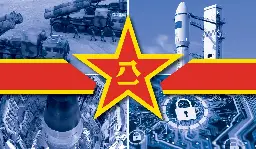PRC Writings on Strategic Deterrence: Technological Disruption and the Search for Strategic Stability
PRC Writings on Strategic Deterrence: Technological Disruption and the Search for Strategic Stability

Submission Statement
Chinese perception of the global strategic balance and their place in it has undergone remarkable shifts in recent years. As the country has grown increasingly capable and assertive, thought leaders' opinions on the best means of deterrence have shifted as well. This report from the Center for Naval Analyses examines writings from 2015 through 2020 to chart the ways that Chinese perceptions of strategic stability and strategic deterrence have shifted. Strategic stability, according to Chinese thinkers, is a state where rational actors have no reasons to use force against one another. Strategic deterrence here is a bit more fuzzy--some writers use it narrowly in the Western sense, while others extend the word to include the capacity to change the status quo to China's benefit as well. It is important to note that the existence of stability or deterrence does not require balance; on the contrary, thinkers recognize that China has been able to achieve deterrence and stability even with a relatively limited nuclear arsenal compared to other great powers. As long as all parties remain mutually vulnerable to one another's strategic weaponry, stability can be preserved. It is this mutual vulnerability that Chinese thinkers are particularly concerned about, as new technologies disrupt traditional thinking about what constitutes a strategic weapon or reduce the effectiveness of the enemy's strategic arsenal. In order to combat this, they recommend further investment in China's second-strike capabilities, improving non-nuclear strategic capabilities, and even a few suggestions of revising China's no-first-use policy. The report also highlights a worrying trend of confidence expressed by experts in China's ability to predict the levels of commitment and escalation the US is willing to employ in various situations--a confidence that is dangerous from an overall escalation management perspective.
If this paper was interesting to you, I would also recommend another recent submission, on Chinese expert assessments of various countersanctions strategies. The commonalities between Chinese views of strategic deterrence and economic resiliency have interesting parallels, most clearly in the shared thinking on asymmetric deterrence.
This report was written by CNA’s China and Indo-Pacific Security Affairs Division (CIP).
This paper examines recent writings from the People’s Republic of China (PRC) and the People’s Liberation Army (PLA) in order to highlight major themes and evolution in concepts of deterrence, strategic stability, and escalation control, particularly between 2017 and 2022.
PRC writings during this period display growing concern that innovations in military technology over the past several decades undermine strategic stability. Many PRC authors argue that the balance of military capabilities that enabled China to maintain a fairly small nuclear deterrent is becoming more fragile, and that as a result, Beijing can no longer be confident in its ability to deter other countries from attacking China with nuclear or other strategic weapons.
This paper provides a baseline for understanding, from a conceptual perspective, how PRC authors frame the challenges that these dynamics pose to China’s strategic deterrent and to strategic stability, and the implications they may have for Beijing’s approach to strategic capabilities.